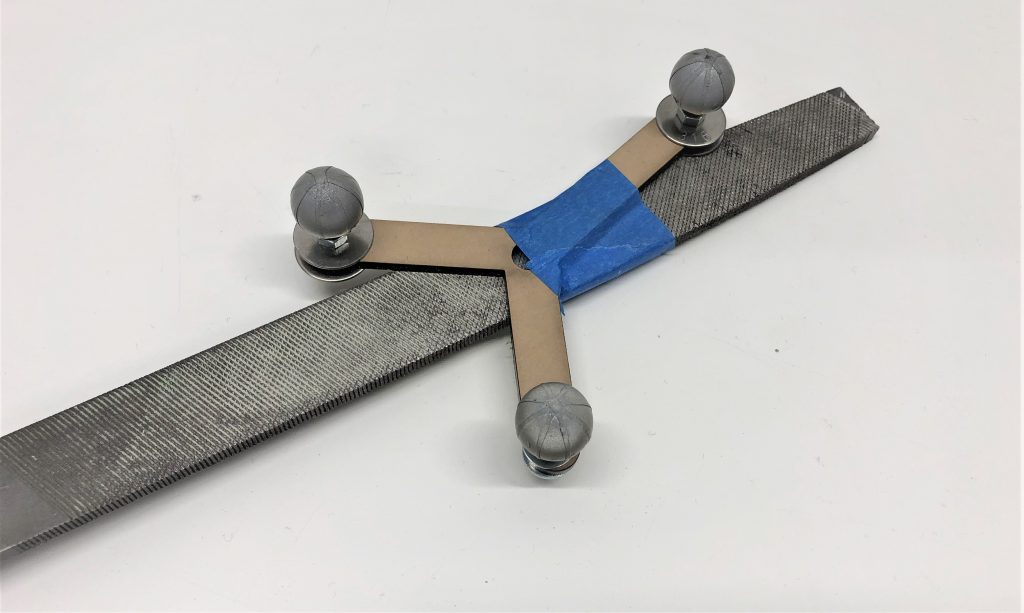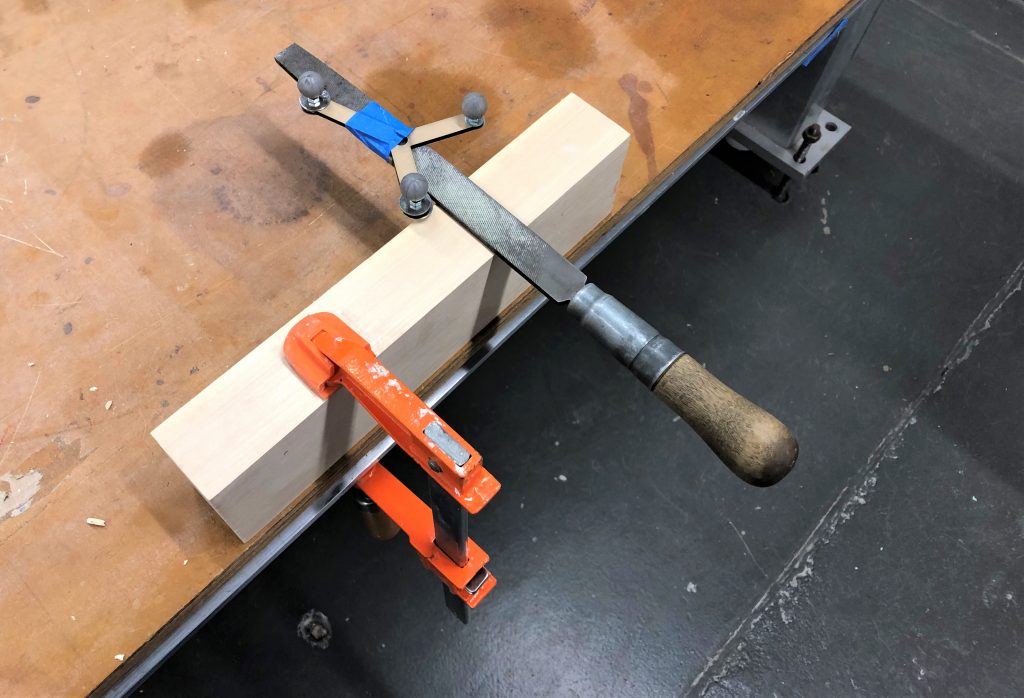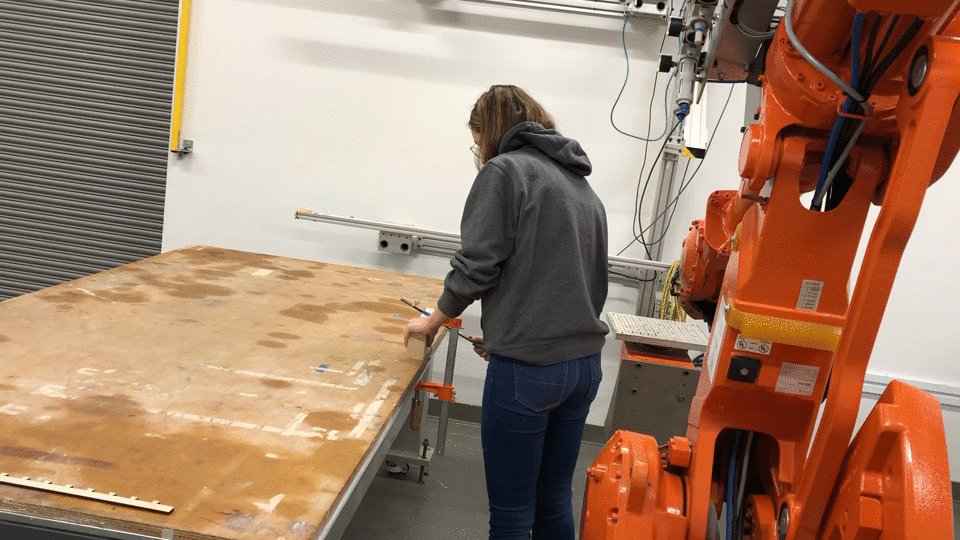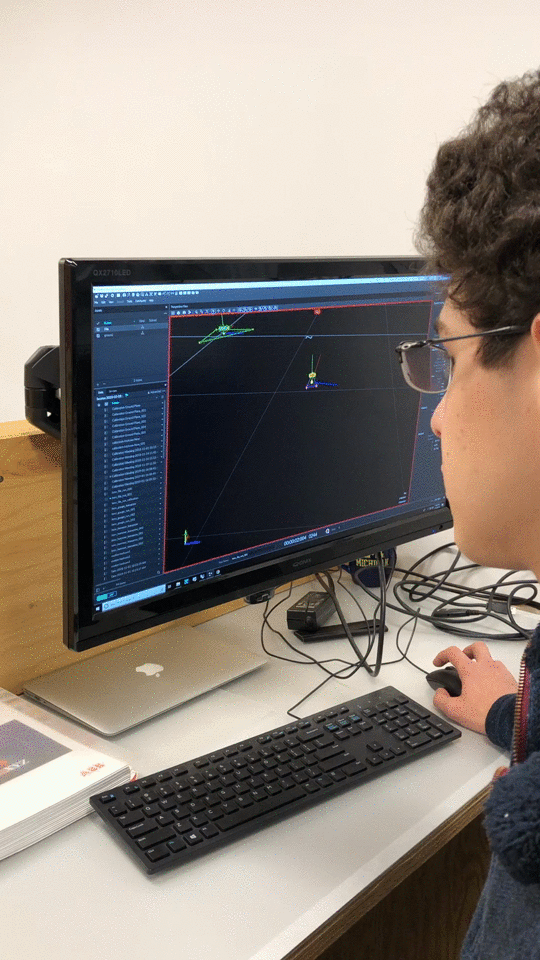Perry Naseck & Olivia Seavy
We examined the motion of a file used on the edge of a block of wood. To record movement, we attached motion capture points to the file-end of the tool in a triangular pattern.

Using the motion capture software Motive, we tracked our motion capture points in digital space. In Rhinoceros, we rebuilt our tool geometry and manipulated the animation using Grasshopper.
We noticed some interesting patterns in the movement of the file:
- For every individual filing motion, the file is set on the wood and then slowly sped up into the initial forward movement. This is a build up of momentum to make the filing easier. If this were a wood rasp or large-toothed-file, then starting slowly would prevent a chunk of wood from breaking off.
- The handle end is tipped at an upward angle on the backward motion, and then the handle end is tipped back down to the original angle for the forward motion. This results in a more rounded finish of the corner of the block of wood.
- The wood block was filed with relatively short strokes, so the piece of wood only comes into contact with a small segment of the center of the file.
Since the file was used single-handed by holding the handle, the file is used as a lever with the vertical force applied to the handle of the file. This reinforces the tendency to change the angle as the file is moved backward. If a second hand was used to press down the file against the wood, then the forces would more separate with one hand providing most of the downward force against the wood and the other providing the stroking force. Providing a separate downward force would also make it easier to hold the file parallel to the wood.



